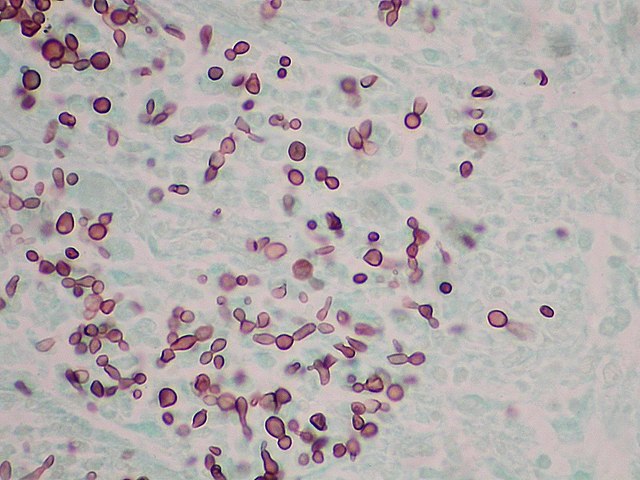Understanding Candida Overgrowth
A Naturopathic Guide to Restoring Gut Balance
Do you struggle with persistent sugar cravings, brain fog, stubborn bloating, or skin issues that just won’t clear up? While these symptoms are common, they can sometimes be signs of a deeper imbalance within your gut microbiome known as Candida overgrowth.
In my naturopathic practice, I see many patients who feel unwell but can’t pinpoint the cause. They often discover that addressing an overgrowth of this opportunistic yeast is a key step in reclaiming their energy and overall health. This page is designed to be your resource for understanding what Candida overgrowth is, its far-reaching symptoms, and how a holistic, naturopathic approach can help you restore balance.

Dr. Jennifer Luis, ND
Guiding patients through Candida overgrowth with targeted naturopathic strategies designed to rebalance the gut and improve overall wellness.
What is Candida? Friend and Foe
Candida albicans is a type of yeast (a fungus) that naturally lives in small, harmless amounts in our mouths, digestive tract, and on our skin. In a healthy, balanced gut microbiome, beneficial bacteria keep Candida populations in check.
Candida overgrowth, or candidiasis, occurs when this delicate balance is disrupted, allowing the yeast to multiply unchecked. It can then shift from its normal yeast form into a more invasive fungal form, potentially leading to a host of systemic health issues as it can contribute to intestinal permeability, or “leaky gut”.

Recognizing the Signs: Common Symptoms of Candida Overgrowth
Because Candida can affect multiple body systems, its symptoms are often widespread and can seem unrelated. Common signs include:
Digestive Issues:
Persistent bloating, gas, constipation or diarrhea, and abdominal cramping.
Chronic Fatigue & Brain Fog:
Feeling tired all the time, difficulty concentrating, poor memory, or a sense of mental “fuzziness.”
Skin & Nail Issues:
Fungal infections like athlete’s foot or toenail fungus, as well as skin conditions like eczema, psoriasis, hives, or rashes.
Intense Cravings:
Strong, often uncontrollable cravings for sugar, refined carbohydrates, and fermented foods.
Recurrent Yeast Infections:
Frequent vaginal yeast infections, urinary tract infections (UTIs), or oral thrush (a white coating on the tongue).
Mood Changes:
Irritability, anxiety, or mood swings.
Weakened Immune System:
Getting sick frequently.
What Causes Candida to Overgrow?
Uncovering the Root Causes
Candida is an opportunist. It thrives when the conditions are right. A naturopathic approach involves investigating the underlying factors that allowed the overgrowth to occur in the first place:
This is Candida’s favorite food source, providing the fuel it needs to multiply rapidly.
Antibiotics, while sometimes necessary, wipe out both good and bad bacteria, creating an opportunity for yeast to take over the empty “real estate” in the gut.
High levels of cortisol can suppress the immune system and raise blood sugar levels, creating a friendly environment for Candida to flourish.
Any condition or medication (like corticosteroids) that suppresses the immune system can allow Candida to grow.
High estrogen levels, such as those from oral contraceptives or hormone replacement therapy, can promote yeast growth.
A Naturopathic Approach to Candida Management
My approach to treating Candida overgrowth is a comprehensive, multi-phase strategy that aims to reduce the yeast population, restore a healthy gut microbiome, and address the root causes to prevent recurrence.

Phase 1: The Anti-Candida Diet (Removing the Fuel)
The crucial first step is to remove Candida’s primary food sources. This typically involves a therapeutic diet that strictly eliminates sugars, refined carbohydrates, alcohol, and most fermented foods for a period of time. We focus on a diet rich in non-starchy vegetables, quality proteins, and healthy fats.
Phase 2: Eradication (Weeding the Garden)
Alongside the diet, we use natural anti-fungal agents to actively reduce the Candida population. These are often more gentle than prescription antifungals and can be very effective. Well-researched botanical options include Caprylic Acid (from coconut oil), Berberine, and extracts from Oregano and Garlic. These are often used in rotation to prevent the yeast from adapting.
Phase 3: Rebuilding the Gut (Seeding & Feeding)
After reducing the overgrowth, we focus on rebuilding a healthy gut environment. This involves:
- Introducing Probiotics: Re-populating the gut with beneficial bacteria to keep yeast in check.
- Supporting Digestion: Ensuring adequate stomach acid and digestive enzymes to properly break down food.
- Healing the Gut Lining: Using nutrients like L-glutamine and soothing herbs to repair any damage and address “leaky gut.”
Phase 4: Addressing the Root Cause & Prevention
To ensure long-term success, we address the original triggers. This involves creating a sustainable long-term nutrition plan, developing stress management strategies, and supporting overall immune and hormonal health.
Testing for Candida Overgrowth
While a diagnosis is often based on a thorough health history and clinical symptoms, functional testing can provide valuable insights:
Comprehensive Stool Testing:
This can identify the presence of yeast in the large intestine and evaluate the overall health of your microbiome.
Organic Acids Test (OAT):
This urine test can detect specific waste products of Candida metabolism, indicating an overgrowth in the upper gut or small intestine.
Blood Testing:
Can look for IgG, IgA, and IgM antibodies to Candida, which can indicate an immune response to a current or recent overgrowth.

A Note on Healing from Candida
Restoring balance from Candida overgrowth is a journey, not a quick fix. It requires patience and consistency, but the improvements in energy, mental clarity, and digestive comfort can be profound. Working with a practitioner to guide you through the process is key to an effective and safe outcome.
Ready to Reclaim Your Gut Health & Energy?
If you suspect Candida overgrowth is contributing to your symptoms, Dr. Jennifer Luis can help you investigate the root causes and create a personalized naturopathic plan to restore balance and vitality.